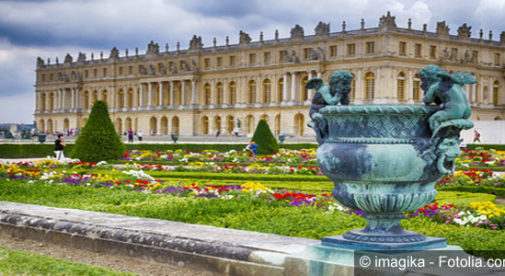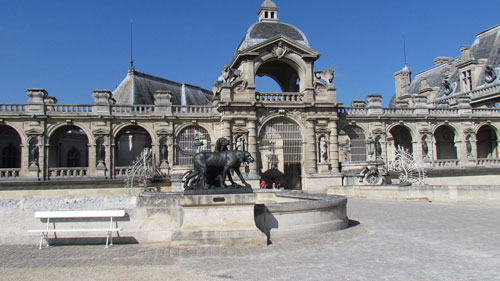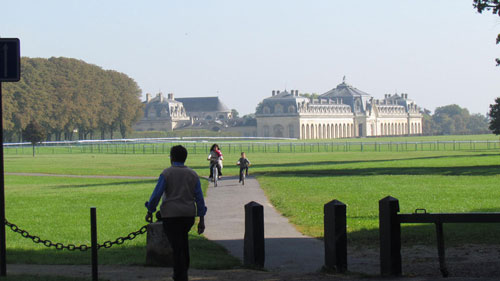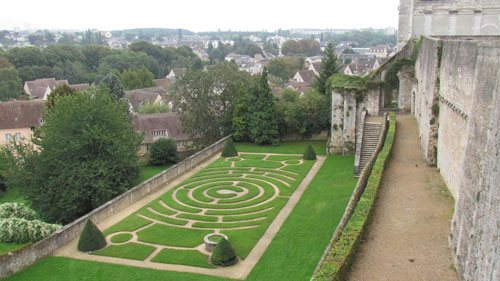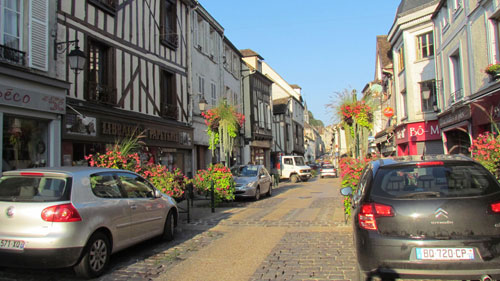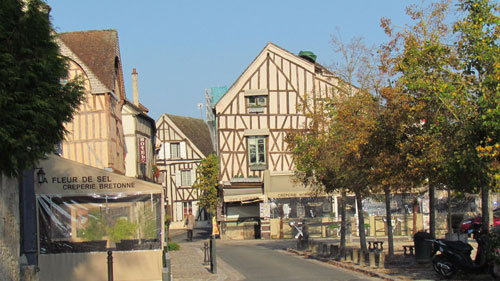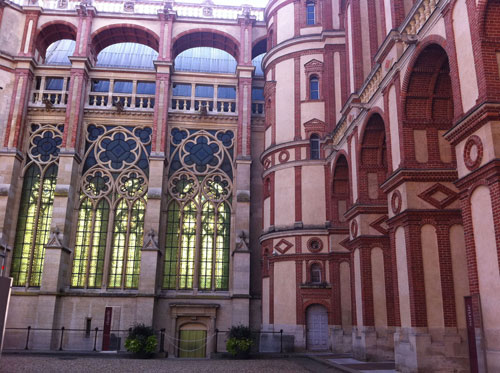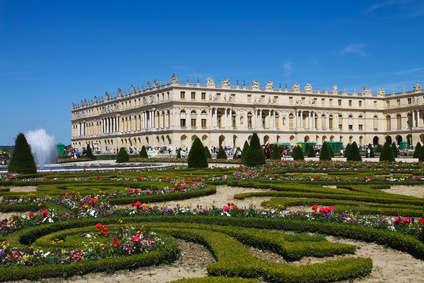If you’re a die-hard lover of Paris, there’s probably no possible place on earth to live except in a sweet, 19th-century apartment in Montmartre that offers a glimpse of the Eiffel Tower. Or among the teeming cafés near the Bastille. Or in the glamorous neighborhoods surrounding the Boulevard Saint-Germain.
But, believe it or not, there are those who adore Paris but could think of nothing worse than living in the city center. Romanticism aside, Paris is a big city—and an intense one, at that. After living here awhile, you start to notice that the streets are endlessly thronged. Scooters and motorcycles gun through the streets day and night, while police sirens wail. And most reasonably-priced apartments are about the size of a walk-in closet.
The best way to revel in the advantages of Paris without its hassles is to live in one of the many lovely towns or cities nearby. You’ve got dozens of choices, all just an hour or less from Paris. Here’s an inside look at the five most attractive.
Versailles
That’s right: Versailles. Although most people immediately associate the name with Louis XIV’s magnificent château, Versailles is the city in which the world-famous château lies. Once you scrape off the veneer of tourism, you’ll find a vibrant town only 24 minutes from Paris that has a life independent of its most popular attraction.
Versailles is an old town, earning its first mention in recorded history in the 11th century. Back then, it was just a small, prosperous village surrounding a tiny castle and the St. Julien church. It started to grow in importance when King Louis XIII began buying property in the forests surrounding Versailles for his hunting retreat. His son, King Louis XIV, later chose Versailles as his seat of power after a messy revolt against him took place in Paris. Thereafter, the population exploded.
Today, Versailles has a prosperity and beauty to rival Paris, yet it is infinitely more tranquil. The heart of Versailles feels more like a large town rather than a city of more than 88,000. I arrived there on a bright September morning amid a wave of tourists. We spilled out of the train together, but, as they surged en masse toward the château, I kept going, heading toward the Place de Notre Dame, where the thrice-weekly outdoor market is held.
Once I’d left the area near the palace, the city dropped any suggestion of a tourist trap.
What remained was a lovely, historic French town composed of pale stone buildings and cobblestone streets, filled with boutiques, contemporary art galleries, and rather intimidating antique shops packed with Louis-XIV furniture and heavy, gilt-framed oil portraits. Locals streamed toward the market, rolling plaid shopping caddies, or chatted together at outdoor cafés. Market vendors hawked their shining fruits and vegetables loudly, shouting about the freshness of their produce, the lowness of their prices. The overall atmosphere was lively yet unhurried, and it was easy to imagine that, if you lived here, Paris’s proximity might be a bonus feature rather than a main attraction. Certainly, Versailles offers plenty to do on its own: plays, concerts, movies (in English and French), music festivals, hiking and biking trails, wine-tasting classes, art classes, cooking classes. There’s even an intriguing class that teaches foreigners French entertaining etiquette.
The city also has dozens of excellent dining options, ranging from high French cuisine to Turkish kabobs. The pretty, paved brick street of rue Satory, near the château, is lined with restaurants, with fixed-menu prices ranging from $18 to $30 for a two-course lunch. Prices drop the farther away from the palace you go, but not by much.
Which brings us to the downside of Versailles: It’s expensive. Its proximity to Paris, its cultural offerings, and its affluent history help keep real-estate prices high. That said, your dollars go much further here than in Paris. In Versailles, $350,000 will buy you a bright, fully-renovated, 500-square-foot, one-bedroom apartment with a balcony overlooking the château’s park. In a comparable Parisian neighborhood, the same sum would get you a tiny, 230-square-foot studio in a late 20th century building. For many, the choice is not a hard one to make.
Chantilly
The small, pretty town of Chantilly is less than 30 minutes from Paris by train, but when you arrive at the station and take a lungful of fresh air, the big city couldn’t feel farther away.
Chantilly (pronounced shahn-tee-yee) lies in the Oise department of France, 24 miles north-northeast of Paris. It is both the name of a town of 11,000 people, and of a larger commune that comprises several other towns and villages, bringing the total population to 36,000.
Despite its relatively small size, Chantilly is known for several things: Tourists come to visit the fairytale-like Château de Chantilly, which houses the largest collection of historical paintings in France outside the Louvre. It also has dazzling parks and gardens on a par with those of Versailles. The town is also considered the birthplace of the luscious crème de Chantilly—or whipped cream, as we call it—and you’ll find it on every dessert menu. Then there’s the prestigious Chantilly racecourse, which you may remember seeing in the James Bond film A View to a Kill.
U.S. expat Cassie Ouaked, who lives here, uses the word “idyllic” to describe Chantilly, and it’s easy to see why. Just a block or two from the train station, I found myself walking along a long, lovely, shaded path of overlapping trees, yellow-brown autumn leaves swirling at my feet. The path eventually led to Chantilly’s main street, a pleasantly rambling block crowded with shops, services, boutiques, cafés, and restaurants.
For expats, Chantilly is idyllic in more ways than one. Not only is it beautiful and close to Paris, but it also has a large international community. British horse-lovers have been setting up residence in Chantilly for over a century, attracted by the racecourse and equestrian training center. Today, there are so many English speaking expats that there’s even a cricket team, Boy Scouts den, and an American football team for youth. Newcomers can get to know others in the area by joining the “Home and Away Dining Society,” an informal group that organizes nights out both in the Chantilly area and in Paris.
Housing prices are high but lower than in Paris. A renovated two-bedroom apartment of 645 square feet, within walking distance to the train station, costs around $296,000. Rent for renovated two-bedroom apartments starts at $1,200 per month.
Saint-Germain-en-Laye
Saint-Germain-en-Laye, a small city in Paris’s western suburbs, made an impression on me before I’d even left the metro station. In the middle of the station, a flower seller had set up shop. He seemed to have an enormous variety of good-quality blooms, from hydrangeas to Gerbera daisies, in a dazzling range of colors.
This simple flower stall told me a lot about the city. Saint-Germain-en-Laye is no tourist town, but a place where real people live…people who either want or need to bring a bouquet of flowers home after spending a day in the city, perhaps to brighten their own table or as a gift for a hostess.
Saint-Germain’s château, a solid stone-and-brick fortress of a castle, is directly across the street from the station. My eye was drawn to a charming cluster of sidewalk cafés and restaurants a few yards from the exit. Dozens of people, the vast majority locals, were sitting outside, enjoying both the sunshine and a leisurely lunch in typical French fashion. The prices weren’t bad, either—a fat slice of quiche and green salad cost about $10.
Peter Shapiro, a U.S. expat and former Saint-Germain-en-Laye resident, says, “For anyone looking for a suburban Parisian experience, it’s a great spot. The center really has that ‘French town’ feel to it—there’s not much tourist traffic and it’s got a wonderful market three times a week that really bustles.”
It’s true that Saint-Germain’s center seems like a textbook picture of a French town: It’s all graceful stone buildings adorned with sky-blue shutters and wrought-iron window boxes. Small, bricked, tree-lined streets lead off the main road and the vibe is definitely “big village” more than “small city.”
Another point in Saint-Germain’s favor is its château. Shapiro says that the château grounds become a hive of activity on weekends, with locals relaxing or playing in the grass (a huge no-no in most Parisian parks) or strolling the wide, pebble-strewn lanes, looking at the whimsical art installations. On the far side of the grounds, there’s a small vineyard and a low stone terrace that provides an excellent view of the Seine and western Paris.
Life in Saint-Germain isn’t for everyone, however. “It’s a very family-focused town,” says Shapiro. “There’s lots of green space to enjoy, parks, and forests, so it’s good for kids running around. But it isn’t very lively in the evenings. People who are looking for more excitement don’t tend to congregate in Saint-Germain.”
Part of the reason Saint-Germain is so family-focused is because it has one of the best schools in France: the Lycée Internationale de Saint-Germain-en-Laye. Originally created for children of the Supreme Headquarters Allied Powers Europe, the school has 13 national sections (from U.S. to Swedish) where children are taught twice a week in the language and style of their home country. Many Paris-based expats gravitate to Saint-Germain-en-Laye just to send their kids to this school.
With all the advantages Saint-Germain offers—including that it’s only 25 minutes from Paris by commuter train—it’s no surprise that real estate is at a premium. A 600-square-foot, one-bedroom apartment in the center will cost about $340,000, while two-bedrooms start from $375,000. Houses in Saint-Germain tend to be large (over 1,600 square feet) and prices skyrocket correspondingly: A three-bedroom house in a residential part of Saint-Germain will cost upward of $780,000—and that’s if it needs “freshening.” A mint-condition, three-bedroom house will likely cost $1 million or more.
Chartres
The medieval city of Chartres lies in the Eure-et-Loire department of France, about 60 miles southwest of Paris. Only an hour away by train, Chartres is most often viewed as a great destination for day- or weekend trips. But for those seeking to immerse themselves in daily French life and culture, untainted by Parisian glamor, Chartres is a wonderful place to settle.
Artist Leslie Xuereb thinks so. A former New Yorker, Leslie moved to Chartres nearly 20 years ago and never looked back. “I was living in Paris for seven years and expecting my second child,” she says. “I wanted to raise my kids in a calmer place than Paris. I wanted more parks and more space to live and work in, but I wanted to be in an independent city, not a suburb.”
She chose Chartres, a town famous for its stunning 11th-century Gothic cathedral, now a UNESCO World Heritage site. “I love Chartres. The cathedral, with its stained glass, the medieval streets really attracted me,” Xuereb says. “It is a very easy place to live, easy to get from one place to another. There’s no worrying about dangerous spots and there are lots of parks and nice promenades along the river. It’s a nice way of life—you can concentrate your time and energy on what’s important.”
As I walked up a hill toward the cathedral, Chartres’s old-fashioned charm was evident. Naturally, centuries-old stone buildings and cobblestoned backstreets helped create this atmosphere, but it was more than that. It was seeing an elderly man stop to chat with a female neighbor, taking off his hat respectfully as he greeted her…cars stopping for me as I waited to cross the street…shops closing up for lunch.
But don’t think that old-fashioned charm means there’s nothing to do. Locals appear to have plenty of opportunity to enjoy art, music, and the outdoors. When I visited, the city was hosting its 10th annual art exhibition, showcasing paintings and sculptures of wood and bronze created by local artists, in a beautiful, 13th-century church that serves as Chartres’s cultural center. Near the Cathedral, the restaurant/club Au Parvis Chartres hosts jazz concerts with renowned musicians every Friday and Saturday night. And because Chartres lies on the Eure River, there are excellent hiking and biking trails along the river to explore, as well as kayaking and boating activities.
Then there’s the cathedral. Notre-Dame de Chartres merits its reputation as one of the most intriguing and jaw-droppingly gorgeous gothic cathedrals in the world. It could take ages to discover every fascinating nook and cranny of this place.
Although only an hour from Paris, the cost of living in Chartres is reasonable. Here you can still get a three-course dinner at a nice restaurant for $18. Real estate prices aren’t bad, either: You can get a sunny, renovated, 700-square-foot, one-bedroom apartment for $169,000. A 950-square foot, three-bedroom house within Chartres proper will run about $233,000, but in nearby villages a house of a similar size will cost about $210,000 or less.
Provins
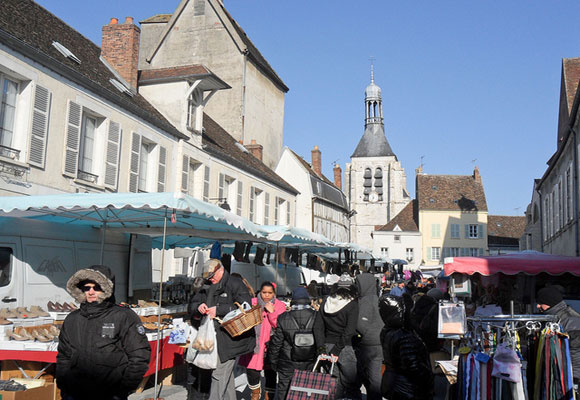 Okay, so at 70 minutes it’s just over an hour away from Paris, but for those who cherish all things beautiful and historical, Provins is a town that will hit all the right buttons. Provins is a fantastically well-preserved medieval city on the border between the Île de France and Champagne regions.
Okay, so at 70 minutes it’s just over an hour away from Paris, but for those who cherish all things beautiful and historical, Provins is a town that will hit all the right buttons. Provins is a fantastically well-preserved medieval city on the border between the Île de France and Champagne regions.
From the 11th through 14th centuries, Provins was a town of great political and commercial importance, thanks to its location at the crossroads for both east-west and north-south trade routes. Twice yearly, merchants from all over Europe and even Asia would travel to Provins to trade spices, textiles, furs, leather, and wine. The town was so crucial to Europe’s economy that it was put under the special protection of the Counts of Champagne, and in the 12th century the city was encircled with thick stone ramparts.
Because so many of the original medieval structures and edifices still exist, the entire town became a UNESCO World Heritage site in 2001. Tourists come from far and wide to walk along the ramparts, explore the town’s dungeons and historic trade houses, witness falconry displays and other historical reenactments, or simply wander Provins’s streets, admiring the lovely half-timbered and exposed-stone houses.
Knowing that Provins is such a major tourist draw, it surprised me that local life—real life—was so evident. I could hear children’s laughter everywhere and locals went about their business, watering bright pink flowers in their window boxes, buying baguettes, ducking into cafés, totally unfazed by their exceptional surroundings. Posters for local art exhibitions, jazz festivals, and some kind of delicious-looking Chocolate Fair were hung in most shops.
The town is divided into an upper and a lower section, both with the same medieval architecture. With its stunning view of the countryside and immaculately-maintained houses, the upper section is the more prettily refined of the two. There are no shops, but there are several restaurants—some surprisingly upscale. A three-course meal at a fancy place runs about $35 per person, but there are a few bistros that offer a three-course lunch for $17 or less. The lower town is where the real heart is: There’s a flower-filled main street with boutiques and shops, cafés and bars. The houses aren’t as fresh-looking as in the town above, but they still brim with character and are often situated next to tranquil, tree-lined canals.
Provins’s loveliness and popularity haven’t affected the real estate prices. You can get a small two-bedroom house or large three-bedroom apartment in central Provins for as little as $166,000. In the upper town, a large, traditional half-timbered house with a sizable garden will likely cost at least $360,000.
In Pictures: 5 Affordable Towns Outside Paris

